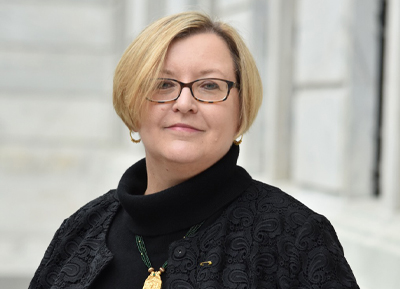The Red Monastery Church (Upper Egypt): Its Significance and Conservation
Presented By
The Byzantine Dialogues from the Gennadius Library
Speaker(s)
Elizabeth S. Bolman,
Professor in the Liberal Arts, Case Western Reserve University
Location
WebinarThe video of our webinar is now available in our video archive.
About the Webinar:
The remarkable Red Monastery Church, located in the Egyptian desert, surprises us. It is not in a city, or even near one. What is it doing, in its isolated environment? The church is a monumental basilica with an elaborate tri-lobed sanctuary, which belongs to a tradition of elite urban architecture. The interior of the eastern end includes the best preserved example of architectural polychromy in paint - tempera and encaustic on architectural elements - that survives on a large scale from the Greek, Roman and early Byzantine periods. This talk will elucidate the significance of the monument and its location, and use it as a means of exploring how we think about the creation of culture in the early Byzantine world. The remarkable conservation project that took well over a decade will also be discussed.

About the Speaker:
Elizabeth S. Bolman engages with the visual culture of the eastern Mediterranean in the late antique and Byzantine periods. Best known for her work in Egypt, she has demonstrated the vitality of Christian Egyptian art and presented new understandings of the nature of artistic production in the early Byzantine and Medieval periods. She edited and was the principal contributor to the award-winning Monastic Visions: Wall Paintings in the Monastery of St. Antony at the Red Sea (Yale University Press and the American Research Center in Egypt, 2002) and to The Red Monastery Church: Beauty and Asceticism in Upper Egypt (2016). This most recent book is the product of a multidisciplinary project that she founded and directed, which included the cleaning and conservation of spectacular and unparalleled early Byzantine paintings at the Red Monastery church. She was appointed Elsie B. Smith Professor in the Liberal Arts and Chair of the Department of Art History and Art at Case Western Reserve University in August 2017. She is the recipient of fellowships and grants from the Guggenheim Foundation, Fulbright program, National Endowment for the Humanities, Dumbarton Oaks, the American Research Center in Egypt, and the United States Agency for International Development, among others.